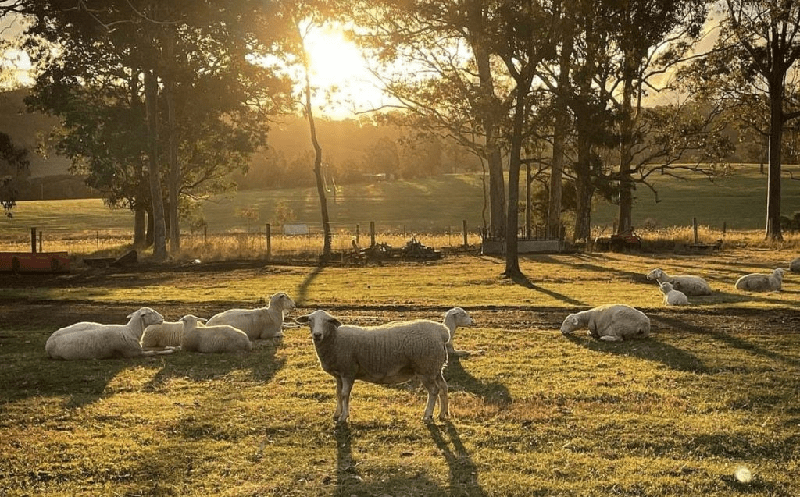A SOIL carbon project in New South Wales has become fifth project in Australia to be issued Australian Carbon Credit Units.
The McLachlan Carbon Project near Dungog NSW has successfully generated 2,110 ACCUs under the Emissions Reduction Fund in a two-year partnership with Australia’s largest soil carbon project developer, AgriProve.
Since making its largest ever issuance of soil carbon credits in June, the Clean Energy Regulator has been routinely approving the allocation of ACCUs – with this being the second project by AgriProve to yield credits in recent months.
AgCarbon Central understands another significant issuance of soil carbon credits is expected to be issued in the coming week.
The McLachlan Carbon Project has also successfully undergone AgriProve’s Carbon Intensity Assessment. This shows landholder John Monaghan and his business partner Alan Smith are successfully sequestering more carbon than they are emitting each year for their carbon farming project, proving they are beyond net-zero carbon intensity.
The most significant factor in growing soil carbon stocks has been implementing multi-species pasture. Through a three-year trial across three paddocks, one under multi species, one with partial implementation of multi-species and a control paddock with no change, by 2022 a marked difference emerged. The soil friability, colour and structure had improved substantially on the paddock with full implementation of multi species pasture.
Mr Monaghan said the project was an opportunity to support the grazing practices he was already planning to implement.
“I know people making changes to their operations to support regenerative agriculture but they are hesitant to sign up to a long-term carbon project,” he said.
“I see this as lost opportunity to add another income steam to their operations and that they should consider the years of carbon accounting they’re missing out on without the ability to measure increases in soil carbon.”
Agriprove managing director Matthew Warnken said he was expecting more projects to be issued credits.
“The ACCUs issued to the McLachlan Carbon Project are the first for soil carbon in New South Wales and provide another piece of evidence for the potential of soil carbon right across Australia,” Mr Warnken said.
“We have more than 38 projects with a measured increase in soil organic carbon which are continuing to go through the process of having ACCUs issued as well. We look forward to seeing all of these landholders be rewarded for the effort that they have put into their carbon projects.”
Researchers put cheaper measurement to the test
Meanwhile, a group of researchers have been putting the different soil carbon measurements to the test in a bid to find cheaper ways of doing it, while maintaining the integrity.
The research team used three farms managed by the University of Sydney, ranging in area from 70 ha to about 2,000 ha, to test three methodologies: traditional laboratory-tested soil samples; proximal sensing, which typically involves equipment coming into direct contact with the soil to produce a reading on-site; and a hybrid approach that combined proximal sensing and remote sensing (satellite imagery).
At $120 a sample, the laboratory approach was four times the cost of the other two methods, which were both about $30.
“In the community there is this idea of just using satellite imagery because it’s almost free, it gives you 100 per cent coverage and you can see the distribution of whatever you are measuring such as where the trees are growing,” soil scientist Dr Mario Fajardo said.
“But it doesn’t give you an exact idea of what’s inside the soil. Soil is very difficult to assess which is why you need to dig a hole and it’s why we’re using proximal sensing as a complement to remote sensing. It’s cheaper and faster than the lab test as you get the results right away.”
Dr Fajardo said the team developed a sampling program on the farms, along with an algorithm that combined the proximal and remote sensing data, to provide a level of certainty equivalent to laboratory testing.
“So that’s a success by itself,” he said.
“It’s also scalable because in Australia you have farms that can be six thousand hectares and can have similar soil types.
“Sampling strategies depend on the variability of soils. So, the opportunity for Australia is that with these methods you can potentially save a lot of money.”
The recommendations
Dr Fajardo said the technology requires further development with the testing locations expanded, given the research was undertaken on farms with known management strategies.
However, the researchers are confident the Federal Government’s target of reducing soil carbon testing to $3 per hectare is achievable on properties of greater than 1,000 ha that also have low variability (a Coefficient of Variation per unit area of lower than 0.01%/ha).
They also recommended land managers devise a carbon sequestration plan before deciding to start the process of soil carbon accreditation as the assessment itself comes with a cost.

